Introduction
What Is Auto Orientation on a Drone?
Step into the amazing world of drones, where it seems as if innovation in such technology will never reach its limits. Within this rapidly evolving context, a question that we must constantly consider is what auto orientation on drone’s means.
Just how do these devices so easily negotiate the skies and adapt to changes in situations? The secret lies in the clever device of auto orientation.
This article will attempt to demystify auto orientation, revealing the secrets behind its elements and operation, as well as how it improves drone performance. Regardless of whether you are a drone veteran or just beginning to get the hang of things, learning about auto orientation is essential for maximizing your drone’s potential.
In this episode we begin to peel back the layers of a technology that is at the core of drone operation, revealing some truths and understandings about auto orientation.
Understanding the Components of Auto Orientation
Drones are marvelous machines, and a key aspect of the technology involves auto-orientation so that they remain stable during flight. To master the operation of auto orientation, it’s essential to understand its important components and especially the central processing unit (CPU).
Central Processing Unit (CPU):
The Central Processing Unit stands at the heart of auto orientation. It’s also known as a drone brain. Put simply, this highly advanced electronic component is in charge of receiving and evaluating information from various sensors affixed to the drone.
Sensors, such as accelerometers and gyroscopes, integrate with magnetometers to provide accurate information concerning the drone’s position and orientation in three-dimensional space.
This data is instantly analyzed by the CPU, which in turn makes split-second calculations to stabilize and orientate drone movement. This rapid decision making is crucially important to stability, particularly in adverse surroundings or during high-speed turns.
The main role is played by the CPU, which combines pilot instructions with the drone’s adaptive responses to environmental changes.
Put simply, once the data from each sensor gets back to central processing (the CPU), it turns those raw inputs into programmed instructions that enable quick adjustment of flying attitude.
With technology moving forward, drone manufacturers are consistently improving the power of their CPUs so that a single machine can maneuver through an extremely demanding or changing situation with greater accuracy than ever before.
The introduction of auto orientation gives us a look at the foundation insights between hardware and software that allows today’s drone to be both an airplane and an intelligent, adaptive friend.
In the following section we will look at how this complex network acts in concert to achieve auto orientation and higher levels of efficiency and reliability.
How Auto Orientation Works
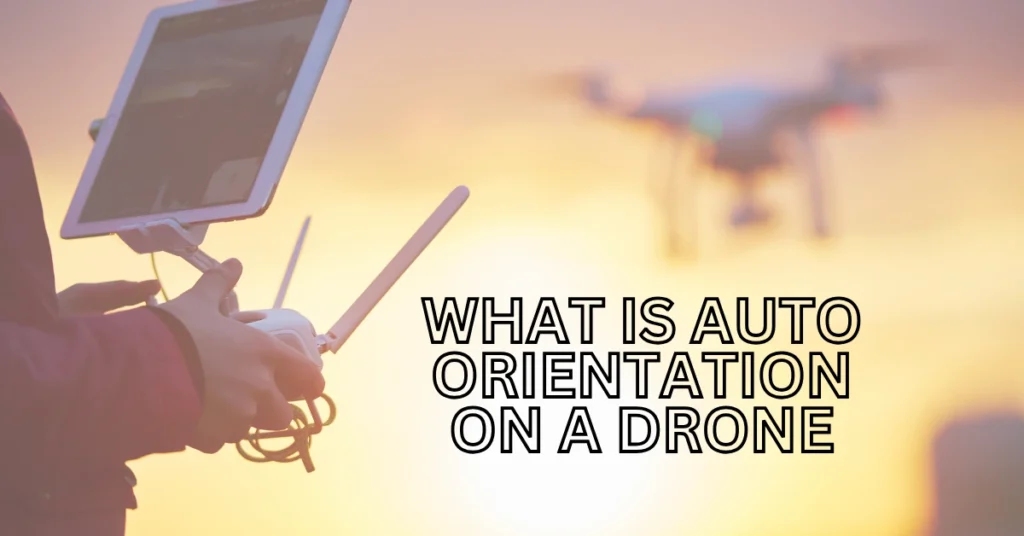
Auto orientation is the technology that gives drones the ability to stay stable and navigate with precision. In this section we will unveil the workings of auto orientation. Delve into the intricate mechanisms that make it all possible.
Mechanism and Technology behind Drone Auto Orientation.
Sensor Integration:
To understand how auto orientation works we must first recognize the role played by sensors. Drones are equipped with a variety of sensors including accelerometers, gyroscopes and magnetometers. These sensors work together seamlessly to constantly monitor the drones movements, acceleration and orientation in time.
Real Time Data Processing:
The data collected by these sensors is swiftly transmitted to the drones Central Processing Unit (CPU). This electronic brain processes the information, at lightning speed using algorithms to determine the drones position and orientation in three spaces.
Autonomous Adjustments:
With this real time data at its disposal the CPU performs calculations to adjust the drones orientation. Whether it encounters factors like gusts of wind or abrupt changes in direction the auto orientation system ensures accurate corrections for maintaining stable flight.
Integration, with Flight Controls:
Auto orientation doesn’t work independently; it seamlessly integrates with flight controls the drones flight controls and the seamless integration enable a combination of pilot input and autonomous adjustments.
This integration guarantees that the drone promptly responds to pilot commands while also benefiting from a layer of auto orientation, for stability.
Adaptive Technology:
Advanced auto orientation systems employ adaptive technology, learning from previous flights and environmental conditions. This adaptive capability enhances the drone’s overall performance, making it more adept at navigating diverse terrains and scenarios.
Understanding how auto orientation works unveils the intricate dance between sensors, CPU, and flight controls that keeps drones steady and responsive. As we explore further, we’ll delve into the significance of auto orientation in enhancing drone navigation, emphasizing its role as a game-changer in the world of unmanned aerial vehicles.
The Significance of Automatic Orientation
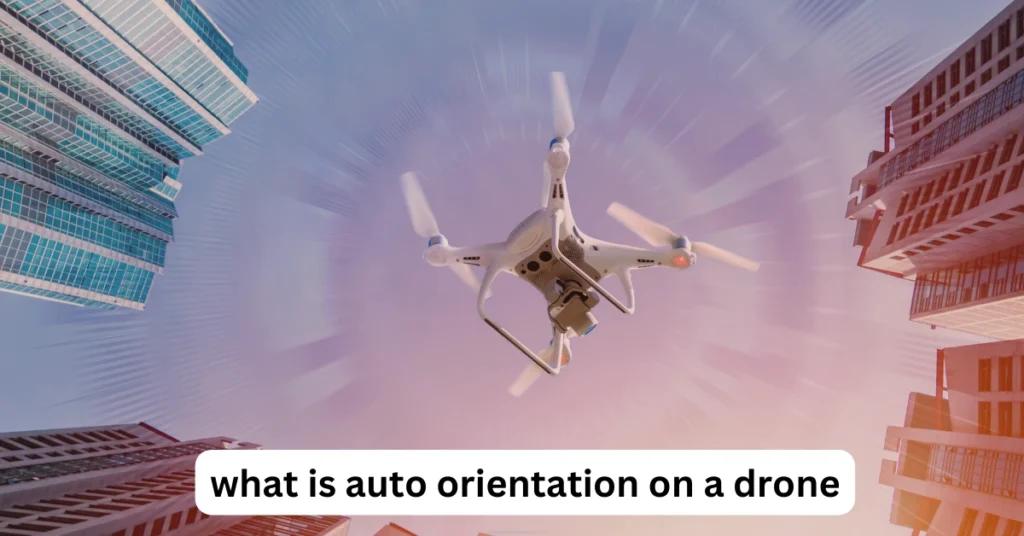
Automatic orientation in drone navigation is more than a feature; it’s a game changer. This section will shed light on the importance of auto orientation. Why it stands as a fundamental aspect in improving overall drone performance.
Emphasizing the Significance in Drone Navigation.
-
Stability in Challenging Conditions:
One of the benefits of auto orientation is its ability to maintain stability when faced with difficult conditions. Drones equipped with this technology can quickly and autonomously adjust their orientation to counter factors like wind, turbulence or sudden changes in direction. This leads to a flight experience for users. Reduces the risk of accidents or loss of control.
-
Precision in Flight Maneuvers:
Auto orientation plays a role in ensuring precision during flight maneuvers. Whether executing turns, rotations or intricate aerial acrobatics the system continuously adjusts the drones orientation allowing for controlled movements. This precision is particularly important for drone pilots involved in tasks such as photography, surveying or inspections.
-
Enhanced Safety Measures:
Safety is paramount, in the world of drones especially as they become increasingly integrated into industries. Auto orientation significantly contributes to safety by preventing instances of behavior or loss of control.
The system serves as a safety measure stepping in when needed to adjust the drones position and prevent any crashes or mishaps.
-
User-Friendly Experience:
For both novice and experienced drone operators, auto orientation enhances the overall user experience. It provides an added layer of confidence and ease of control, allowing users to focus on capturing the perfect shot or executing specific flight tasks without constant worry about stabilizing the drone manually.
-
Versatility Across Environments:
Drones equipped with auto orientation are versatile across diverse environments. Whether flying in open spaces, confined areas, or challenging terrains, the technology adapts to the surroundings, ensuring consistent performance. This versatility opens up new possibilities for drone applications, from cinematography to search and rescue operations.
In essence, the significance of auto orientation lies in its ability to transform drones from mere flying machines to intelligent, adaptable companions. As we explore further, we’ll weigh the pros and cons of this technology, providing a comprehensive understanding of its impact on the drone ecosystem.
Pros and Cons of Auto Orientation Technology
Auto orientation technology has revolutionized drone navigation, but like any innovation, it comes with its set of advantages and disadvantages.
This section aims to provide a balanced overview of the pros and cons, offering Insights into the practical implications of incorporating auto orientation into Drone design.
Weighing the Benefits and Drawbacks for Users:
Pros:
-
Enhanced Stability:
Advantage: The automatic orientation feature greatly enhances the stability of drones ensuring a more controlled flight experience. This is particularly useful, in challenging weather conditions or when performing maneuvers.
-
Precise Flight Control:
Advantage: This technology enables control during flight allowing for navigation and accurate execution of maneuvers. It is crucial for tasks such as photography, surveying and inspections that require a level of precision.
-
Improved Safety Measures:
Advantage: The auto orientation serves as a safety net by intervening to correct the drones orientation and prevent accidents. This feature is especially valuable for both novice and pilots reducing the risk of collisions and creating an operating environment.
-
User Friendly Experience:
Advantage: Auto orientation enhances the user experience by providing a layer of stability and control making drone operation more accessible and enjoyable for users, with varying skill levels.
Cons:
-
Cons of relying on technology:
If the auto orientation technology in drones malfunctions or encounters errors it can pose challenges. Pilots should be aware of these issues. Be prepared to switch to manual control when needed.
-
Increased complexity and costs:
Integrating auto orientation into drone design adds complexity leading to manufacturing costs. This may impact the affordability of drones for budget consumers.
-
Limited autonomy in conditions:
While auto orientation is effective in scenarios it may face difficulties in conditions like strong winds or severe turbulence. Drones might struggle to maintain autonomy in situations and require intervention from the pilot.
-
Continuous technological advancements
Drone technology evolves rapidly which means that cutting edge features today may quickly become outdated tomorrow. Users investing in drones with auto orientation should stay informed about the advancements in this field.
By understanding both the advantages and disadvantages of auto orientation users can make informed decisions when selecting or operating drones.
As we explore the nuances of drone technology the following sections will walk you through the process of calibration. Delve into practical uses of auto orientation, in real world scenarios.
Conclusion
In conclusion when we delve into the realm of “What Is Auto Orientation, on a Drone ” we uncover an aspect of drone technology. Auto orientation, driven by the interplay between sensors, CPUs and flight controls serves as a pillar for stability, precision and improved user experiences.
The importance of auto orientation in navigating conditions ensuring safety and enabling flight maneuvers cannot be overstated. However as with any advancement it is vital to have a nuanced understanding of the advantages and disadvantages it brings.
The evolving nature of drone technology holds promise for exciting developments making it crucial for users to stay updated on the latest advancements.
Whether you are an enthusiast in drones or a professional pilot exploring this field comprehending the essence of auto orientation opens up doors to truly appreciate the intelligence embedded within these aerial companions.
As drones reach heights under their guided flight paths auto orientation, the journey promises innovation, adaptability, and a future where these unmanned marvels redefine the skies.


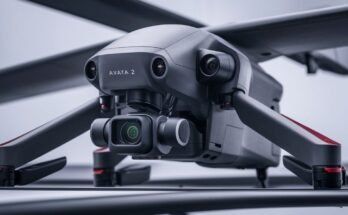
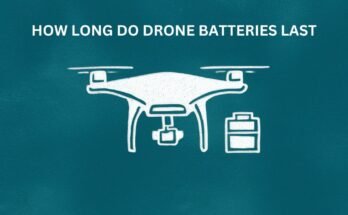
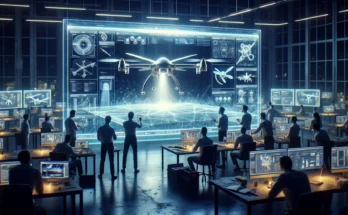
2 Comments on “What Is Auto Orientation on a Drone | Discover all facts about Drones orientation”